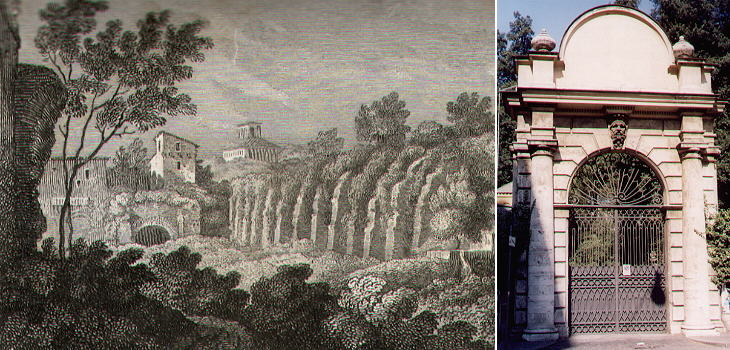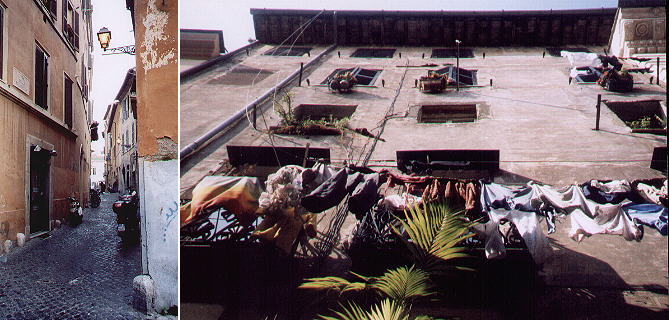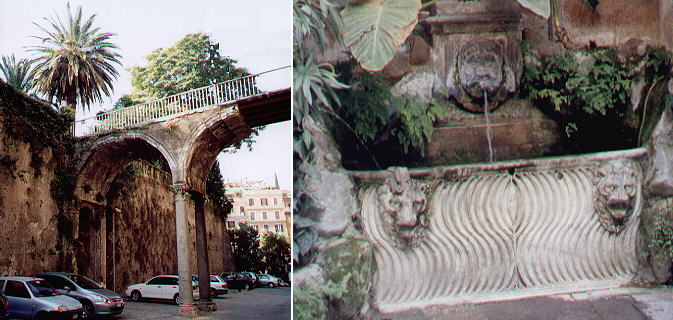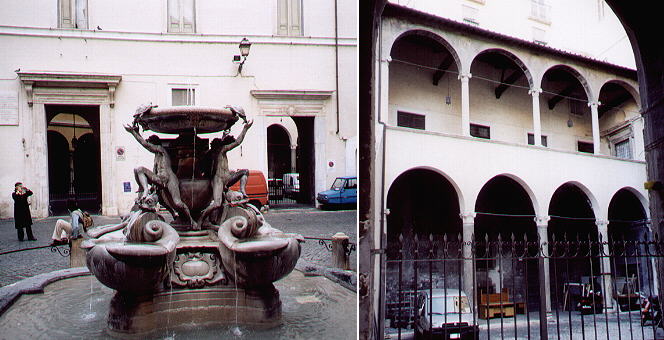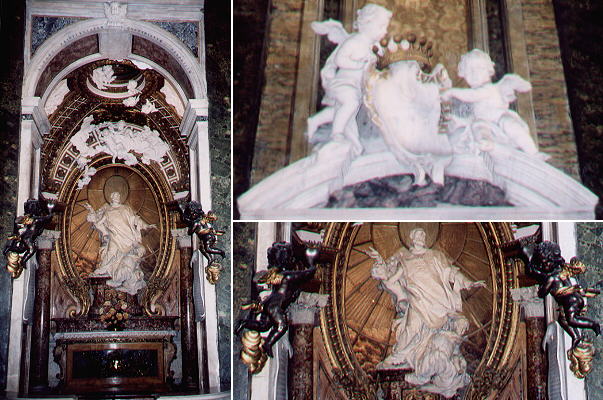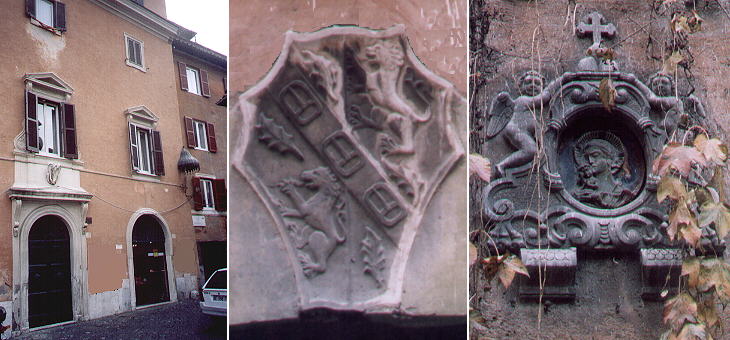|
TIMEO HOMINEM UNIUS LIBRI (St. Thomas Aquinas) (I fear the man who trusts one book only)   In plate 3: Porta Salaria Villa Paolina
In the XIXth century the balance between prints showing monuments of ancient and of modern Rome changed in a
significant manner. The market became very much oriented towards the ruins of the glorious past, rather than the theatrical architectures of the Baroque period.
For this reason Gaetano Cottafavi, who in 1842 illustrated a large guide of Rome by Jeremiah Donovan, thought to add to the most usual views of ancient Rome, the print (partially) shown
above portraying the Horti Sallustiani. In the background, to the right of the buildings shown in the previous photo, it is
possible to see the casino of Villa Paolina, built in 1750 ca. by Cardinal Silvio Valenti Gonzaga.
In 1798 the French opened the gates of the Ghetto, but the return of the papal government
after the Napoleonic era closed them again. This decision was criticized by many European governments and due to their pressure in 1823 Pope Leo XII
added Via della Reginella, a street leading to Piazza delle Tartarughe to the area of the Ghetto. The street is therefore
the only surviving part of the old quarter. Some relatively tall houses are a sign of the high density of population in the Ghetto (this also occurred in the Ghetto of Venice).
The obelisk shown in the plate is now in the Pincio Gardens. It had been discovered in 1570 near Porta Maggiore and in
1632 Pope Urbanus VIII moved it to his family palace with the idea to erect it next to
Ponte Ruinante (falling bridge), a bridge designed by Bernini with two very different objectives: one was very practical, i.e. to provide the palace with a direct
access to the upper part of the gardens; the other one was to add yet another memento of ancient Rome to the many already existing in the gardens. To this purpose Bernini
designed a bridge with one arch which is in part collapsed and the other one with the stones of the vault on the verge of falling.
The Mattei initially acquired and lived in two rather simple and small buildings. The courtyard of the house to the right of the fountain was
designed towards the end of the XVth century following patterns of Florentine
architects.
The Sicilian architect Filippo Juvarra came to Rome in 1703 at the age of 25; in the nine years he spent in Rome he had only one opportunity to
show his skills. The Antamoro were very wealthy, but definitely not a major Roman family.
Their chapel was very small, but Juvarra, who had studied the masterpieces of both Borromini and Bernini,
designed a unique and intriguing chapel. It is a pity that Juvarra had to leave Rome to express his talent.
During his stay in Rome he published a book showing the finest coats of arms of the Popes.
The coat of arms of the owner of this finely restored old house near S. Benedetto in
Piscinula, would puzzle even an expert in genealogy and heraldry of the Roman families. The meaning of the
horses and the three buckles requires a visit to Castle Leslie in
Ireland. The following is an excerpt from the owners' website: Go to my Home Page |
All images © 2005 by Roberto Piperno. Write to romapip@quipo.it (alternative e-mail address at romeartlover@katamail.com)
